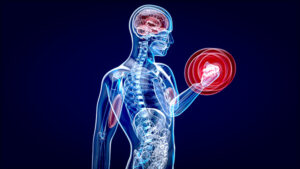
Introduction to Anabolic Cooking
Anabolic cooking is a specialized approach to meal preparation that focuses on maximizing nutritional intake to support muscle growth and overall fitness. This concept is particularly popular among athletes, bodybuilders, and fitness enthusiasts who aim to enhance their physical performance and muscle recovery through diet.
What is Anabolic Cooking?
Anabolic cooking refers to the strategic incorporation of foods and cooking methods that promote anabolism—the process of building up organs and tissues, including muscle mass. This diet emphasizes proteins, complex carbohydrates, and essential fats, which are pivotal for muscle repair and growth.
The Goals of Anabolic Cooking
The primary objectives of anabolic cooking are to optimize the body’s muscle-building capabilities and improve recovery times, while also ensuring that meals are enjoyable and varied. This is achieved by focusing on nutrient-dense ingredients that are both satisfying and conducive to muscle gain.
Key Components of Anabolic Cooking
Anabolic cooking includes several components that are designed to support anabolic processes in the body:
Protein-Rich Foods
Protein is the cornerstone of anabolic cooking. High-quality sources like chicken, beef, fish, eggs, and dairy products provide the amino acids necessary for muscle repair and growth.
Complex Carbohydrates
Carbohydrates are crucial for refueling energy stores and supporting overall performance. Foods such as oats, quinoa, brown rice, and sweet potatoes offer sustained energy release.
Healthy Fats
Fats are essential for hormone production, including those that regulate muscle growth. Sources like avocados, nuts, seeds, and fish oil are staples in the anabolic diet.
Micronutrients
Vitamins and minerals play vital roles in muscle function and recovery. Incorporating a variety of fruits and vegetables ensures a broad intake of these essential nutrients.
Benefits of Anabolic Cooking
Anabolic cooking offers multiple benefits for those looking to enhance their physical condition:
- Enhanced Muscle Growth: By providing the body with adequate protein and essential nutrients, anabolic meals promote more efficient muscle synthesis.
- Improved Recovery Times: Nutrient-rich foods help reduce recovery time between workouts, allowing for more frequent and intensive training.
- Increased Energy Levels: Balanced meals with complex carbohydrates and healthy fats sustain energy levels, improving overall endurance and performance.
- Dietary Variety: Anabolic cooking encourages a diverse range of foods, preventing dietary monotony and ensuring a wide array of nutrients.
Planning Anabolic Meals
To effectively implement anabolic cooking into your diet, planning is essential. This includes meal prepping, understanding portion control, and balancing macronutrients to meet individual dietary needs.
Sample Anabolic Meal Plan
Here is a simple day of meals for someone following an anabolic diet:
- Breakfast: Scrambled eggs with spinach and whole grain toast.
- Lunch: Grilled chicken breast, quinoa salad, and steamed broccoli.
- Dinner: Baked salmon, sweet potato mash, and a mixed greens salad.
- Snacks: Greek yogurt, almonds, and a piece of fruit.
Tips for Anabolic Cooking
To maximize the benefits of anabolic cooking, consider the following tips:
- Cook in Bulk: Prepare meals in bulk to save time and ensure you always have healthy options available.
- Spice It Up: Use herbs and spices to enhance flavor without adding excessive calories.
- Stay Hydrated: Adequate water intake is crucial for optimal metabolic function and muscle recovery.
Conclusion
Anabolic cooking is more than just a diet; it’s a lifestyle approach that supports rigorous training and robust health. With the right balance of macronutrients and micronutrients, anyone can enhance their muscle growth, recovery, and overall performance. Embracing this method of cooking can lead to significant improvements in both physical appearance and athletic capabilities.
For more comprehensive recipes and meal plans, refer to resources like “The Anabolic Cooking Cookbook” or visit “Bodybuilding.com’s Nutrition Articles” for expert advice and guidance.

Be the first to comment